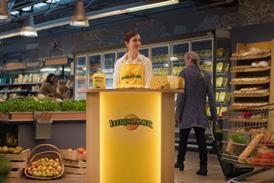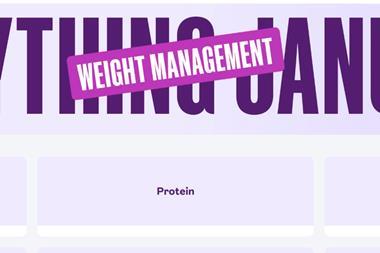The big five have gone back to basics with leaflet drops and brochures that focus on price. And they're paying handsomely, says Helen Gregory
Open your local paper and you can guarantee that a sheaf of glossy advertising will fall out not just from double glazing and cheap loan firms, but price news from at least a couple of the major multiples.
Not content with slick TV advertisements and in store promotions, the big five are now going back to their roots and attempting to pull in shoppers using basic, no-nonsense leaflets and brochures.
Safeway, Tesco, Asda and Somerfield all claim to have been dropping leaflets through letterboxes for years, but it is only in recent months that their initiatives have become high profile.
Safeway even posts the brochures in rivals' car parks while Somerfield is set to double its output later this week. Even Sainsbury has jumped on the bandwagon.
Tesco produces its monthly Price News brochure and distributes them to between three and six million people in stores and through house drops.
Head of price and promotion Janet Smith says the chain is still playing around with the concept. "We've trialled different things and learned a lot. We will decide the direction we want to go with it and whether it really attracts people to stores in a couple of months," she adds.
Smith insists the method is in keeping with its overall marketing strategy and denies that it appears downmarket. "The Tesco brand appeals to everyone, from price sensitive customers to those who aren't bothered by promotions, and you don't have to encompass every part of that in every medium of communication."
Brand consultants are not convinced that it will have the desired effect. Pam Robertson, director at brand consultants Brandsmith, believes that the likes of Tesco and Sainsbury were encouraged to start their price campaign through letterboxes in case shoppers thought they were too expensive. But this makes them seem like "one of the herd. They should find another vehicle".
She adds: "It might have an impact on the customers for whom price matters, but that's only about a quarter of the population. Leaflets generally imply cheap and cheerful' and price obsessed' it could be a turn off." Roberston says it would be better to alert shoppers to the price in store instead. "You should attract people in for the brand offer, then get them to be pleasantly surprised at the price."
Dorothy Mackenzie, at Dragon brand consultants agrees that it is an unusual move by Britain's top grocers. Old-fashioned even. "Tesco's leaflet seems rather dissonant with the image it's trying to create. If it became a significant part of their marketing campaign it could be highly risky.
"People are conscious of special offers but they're not choosing the retailer on the basis of that they form an overall impression over a period of time."
Somerfield has a single gatefold leaflet in which it promotes mainly Megadeals as well as BOGOFs after research found that just giving customers details on how much shoppers would save on products was less popular. It produces one leaflet a month but will now double that to a fortnightly edition in the next few weeks. It boasts about 34% penetration of UK households.
A spokeswoman says: "It's proved very valuable and more effective than TV adverts. This way we can target a socio-economic customer base. It's a cost-effective way of targeting people who aren't our normal shoppers."
Sainsbury jumped on the bandwagon six months ago and now has a four page leaflet, as part of its new marketing initiative. It targets households around 200 of its stores and the chain plans to roll the programme out to more shops during the year.
And although a spokeswoman says they have no proof that it actually works, she insists: "It's effective and does bring extra customers in, or we wouldn't be doing it."
Asda has had its Price News letter for five years and distributes it to about seven million people every four weeks. It focuses on its EDLP offer rather than promotions.
Safeway meanwhile boasts that it was the first to target households in this way and launched its leaflet campaign in October 1999. The chain reckons it has attracted one million new customers through delivering up to 10 million people in the catchment area of its 480 stores. It says the concept is more effective than its former TV advertising campaign and has the added bonus of saving £25m a year from saying goodbye to the talking toddlers.
However, Kevin Hawkins, Safeway's communication director, believes it is not enough for a chain to promise offers in the leaflets, and insists a strong supply chain is imperative to fulfiling customer expectations.
"It's not just a question of turning out flyers and hoping to increase volume sales. Handling the degree of volume on our highly promoted "hero" products with deep discounts has been a real challenge for the supply chain.
And he insists that other chains following the same route does not take the shine off Safeway's offer. "What goes on behind the scenes will determine their success."
The battle of the letterboxes has only just begun.
{{FEATURES }}
Close menu
- Home
- Retail & Wholesale
-
Products & Suppliers
- Back to parent navigation item
- Products & Suppliers
-
Product Categories:
- Back to parent navigation item
- Product Categories:
- Alcoholic drinks
- Bakery
- Cereals & breakfast
- Cheese
- Chicken & poultry
- Chocolate
- Confectionery
- Crisps, nuts & snacks
- Dairy
- Fish
- Fresh produce
- Frozen
- Household
- Meat
- Own Label
- Sauces & condiments
- Seasonal
- Soft drinks
- Vaping
- Vegan & plant-based
- World foods
- Suppliers
- People
- Reports & Data
-
Topics A-Z
- Back to parent navigation item
- Topics A-Z
-
Popular topics:
- Back to parent navigation item
- Popular topics:
- Cost of living crisis
- Crime
- Deposit Return Schemes
- Finance
- Government & Regulation
- Health
- Inflation
- Loyalty
- Marketing
- Mergers & Acquisitions
- New Product Development
- Sourcing
- Supply chain
- Sustainability & environment
- Technology
- Ultra Processed Foods
- Vaping
- A-Z all topics
- Content by type:
- Events
- Ask iA (beta)
- Subscribe now
Sign in to comment on this article
Not logged in before? Register for FREE guest access today.
You will be able to:
- Read more stories
- Receive daily newsletters
- Comment on stories
Advert













No comments yet